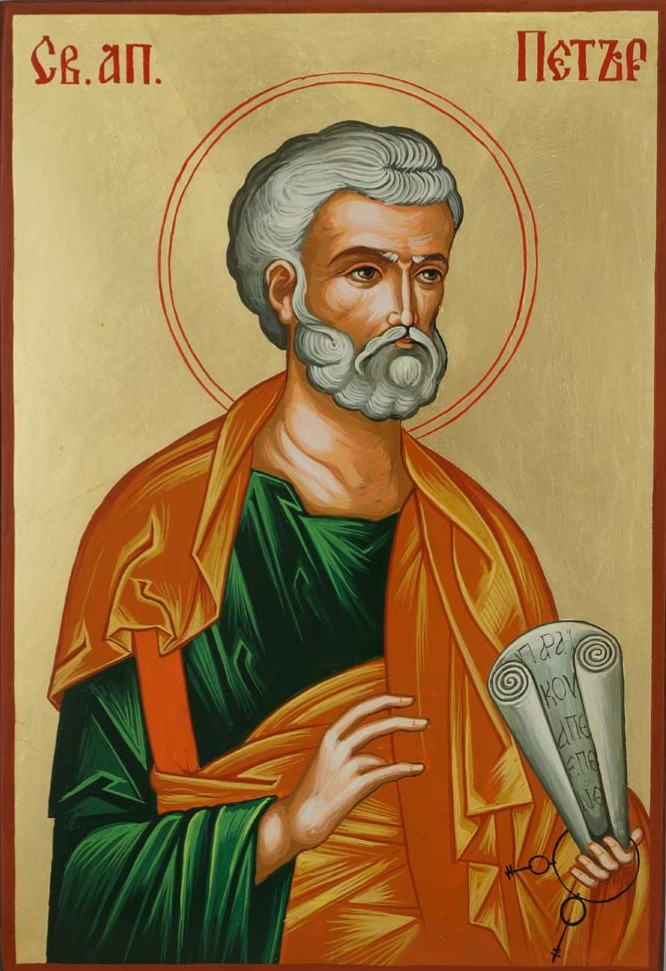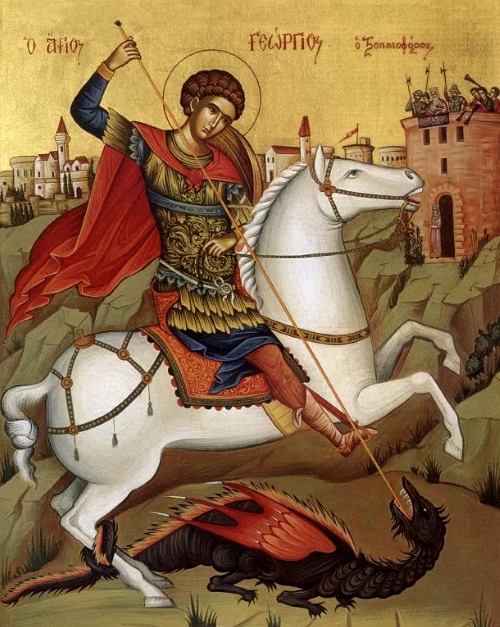Christ is Risen!
St. George Divine Liturgy on Monday, April 23 at 9:30am
Join us for the St. George Divine Liturgy on Monday, April 23, 2018 starting at 9:30. An artoclasia (Blessing of the Loaves) will be offered at the conclusion of the Liturgy.
Who Was St. George?

The holy, glorious and right-victorious Great-martyr and Trophy-bearer George was a Christian Roman soldier killed under Diocletian at the beginning of the fourth century. Though he was born in Cappadocia, his mother was from Palestine, and thus he is a particular favorite of many Palestinian Christians.
According to Tradition, George was born to a Christian family during the late 3rd century. His father was from Cappadocia and served as an officer of the army. His mother was from Lydda, Palestine. She returned to her native city as a widow along with her young son after the martyrdom of George’s father, where she provided him with a respectable education and raised him in piety.
The youth, it would seem, followed his father’s example in joining the army soon after his coming of age. He proved to be a charismatic soldier and consequently rose quickly through the military ranks of the time. By his late twenties he had gained the titles of tribunus (tribune) and later comes (count). By that time George had been stationed in Nicomedia as a member of the personal guard attached to Roman Emperor Diocletian (reign 284–305).
In 303, Diocletian issued an edict authorising the systematic persecution of Christians across the Empire. His caesar, Galerius, was supposedly responsible for this decision and would continue the persecution during his own reign (305–311). It is believed that George was ordered to take part in the persecution but instead confessed to being a Christian himself and criticised the imperial decision. An enraged Diocletian proceeded in ordering the torture of this apparent traitor and his execution.
Then, after innumerable forms of torture, George was executed by decapitation in front of Nicomedia’s defensive wall on April 23, 303. The witness of his suffering convinced Empress Alexandra and Athanasius, a pagan priest, to also become Christians, and so they also joined George in martyrdom as consequence. George’s body was then returned to Lydda for burial, where Christians soon came to honor George as a martyr.
Read the full story on the St. George Orthodox Church website.

